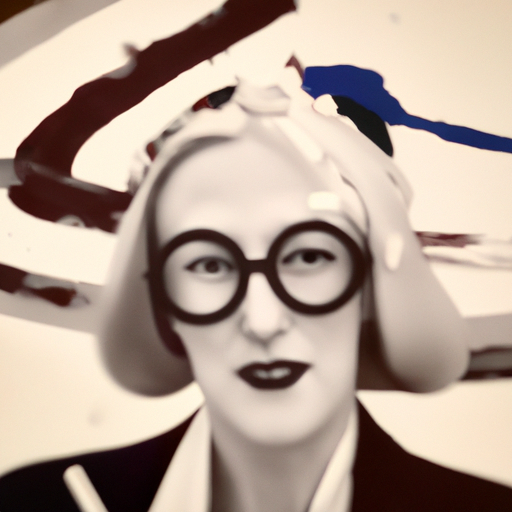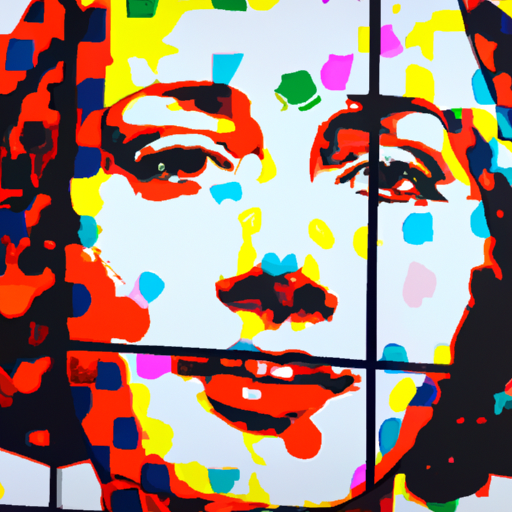
-
Table of Contents
Dadaist Influence: Chaos and Creativity in Art

Introduction
The Dada movement emerged in the early 20th century as a response to the horrors of World War I. It was a radical and avant-garde movement that rejected traditional artistic conventions and embraced chaos and absurdity. Dadaists sought to challenge the established norms of art and society, and their influence can still be seen in contemporary art today. This article explores the impact of Dadaism on the art world, examining its key characteristics, notable artists, and lasting legacy.
The Birth of Dadaism
Dadaism originated in Zurich, Switzerland, in 1916, with the opening of the Cabaret Voltaire. This artistic and intellectual hub became a meeting place for artists, writers, and intellectuals who were disillusioned by the war and sought to create a new artistic movement. The term “Dada” itself is believed to have been chosen randomly from a French-German dictionary, reflecting the movement’s rejection of logic and reason.
Key Characteristics of Dadaism
- Anti-Art: Dadaists rejected traditional notions of art, embracing anti-art as a means of challenging established norms.
- Collage and Assemblage: Dadaists often used collage and assemblage techniques, combining disparate elements to create new and unexpected compositions.
- Chance and Randomness: Dadaists embraced chance and randomness in their creative process, allowing accidents and spontaneity to guide their work.
- Provocation and Absurdity: Dadaists sought to provoke and shock their audience, often using absurd and nonsensical elements in their artworks.
- Performance and Manifestos: Dadaists engaged in performances and wrote manifestos to express their ideas and challenge societal norms.
Notable Dada Artists
Several artists played a significant role in the development and spread of Dadaism. Their innovative approaches and rebellious spirit continue to inspire artists today.
Marcel Duchamp
Marcel Duchamp is often considered the father of Dadaism. His most famous work, “Fountain,” a urinal signed with the pseudonym “R. Mutt,” challenged the very definition of art. Duchamp’s concept of the “readymade,” where everyday objects were transformed into art simply by the act of selection, had a profound impact on the art world.
Hannah Höch
Hannah Höch was a prominent female Dada artist known for her photomontages. She used images from popular magazines to create collages that explored gender roles, consumerism, and the absurdity of society. Höch’s work challenged traditional notions of femininity and paved the way for future feminist artists.
Tristan Tzara
Tristan Tzara was a Romanian-born poet and one of the founders of the Dada movement. He was known for his provocative performances and his influential Dada manifestos. Tzara’s writings and ideas played a crucial role in shaping the philosophy and direction of Dadaism.
The Legacy of Dadaism
Although the Dada movement was short-lived, its impact on the art world was profound and far-reaching. Dadaism paved the way for many subsequent art movements and continues to influence contemporary artists today.
Surrealism
Dadaism laid the groundwork for the Surrealist movement, which emerged in the 1920s. Surrealists, such as Salvador Dalí and René Magritte, embraced the irrational and subconscious, exploring dreamlike imagery and the juxtaposition of unrelated elements. Surrealism built upon Dadaist ideas of chance, randomness, and the liberation of the unconscious mind.
Pop Art
The Pop Art movement of the 1950s and 1960s drew inspiration from Dadaism’s use of everyday objects and popular culture. Artists like Andy Warhol and Roy Lichtenstein incorporated mass-produced images and consumer goods into their artworks, blurring the boundaries between high and low art.
Conceptual Art
Conceptual art, which emerged in the 1960s, shares Dadaism’s emphasis on ideas and concepts over traditional artistic skills. Artists like Joseph Kosuth and Yoko Ono challenged the notion of art as a physical object, focusing instead on the intellectual and philosophical aspects of artistic creation.
Conclusion
The Dada movement revolutionized the art world by challenging established norms and embracing chaos and absurdity. Its influence can be seen in various art movements that followed, from Surrealism to Pop Art and Conceptual Art. Dadaism’s rejection of traditional artistic conventions and its emphasis on provocation and randomness continue to inspire artists to push boundaries and explore new creative possibilities. The legacy of Dadaism serves as a reminder that art can be a powerful tool for social and cultural critique, and that creativity can thrive in chaos.
